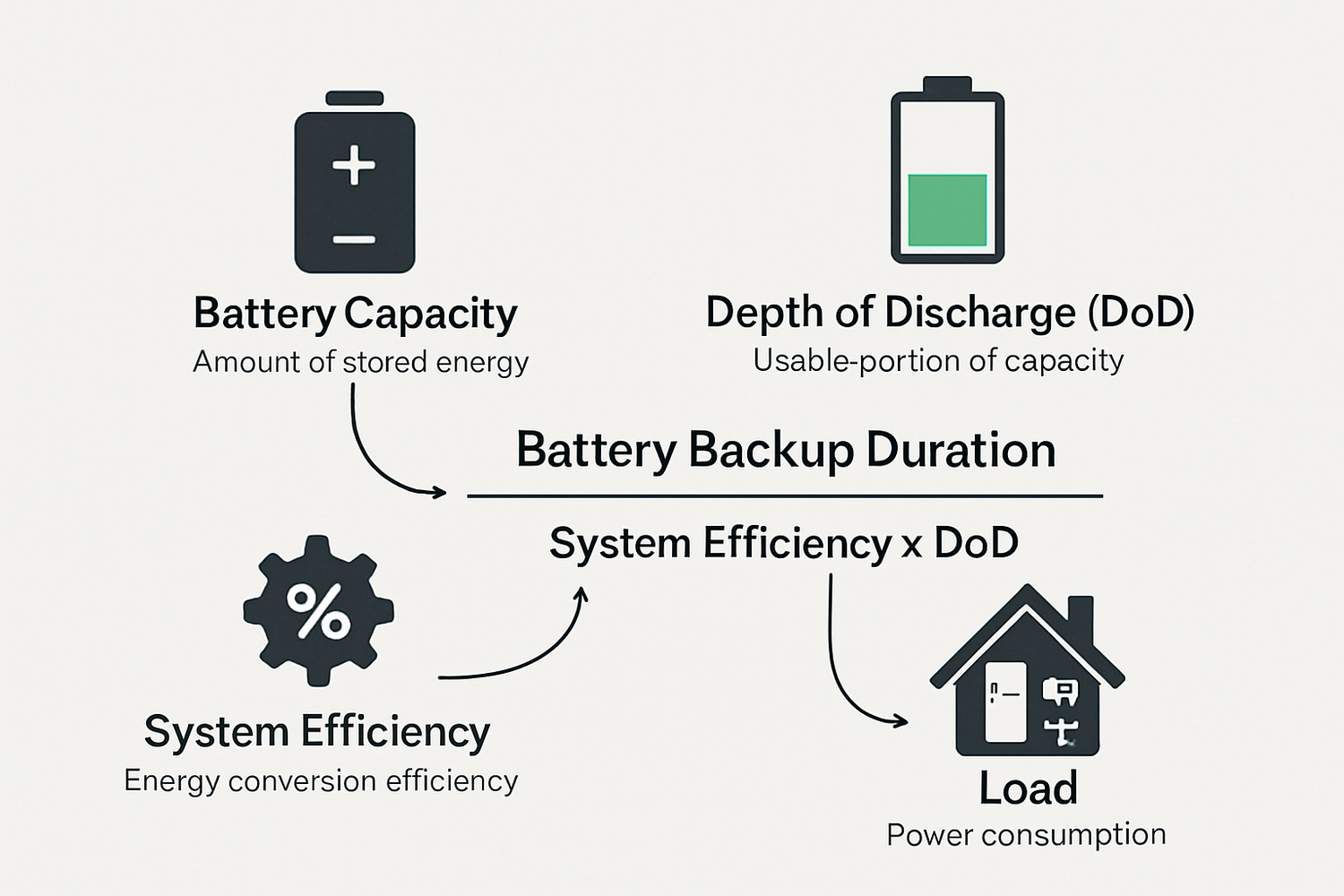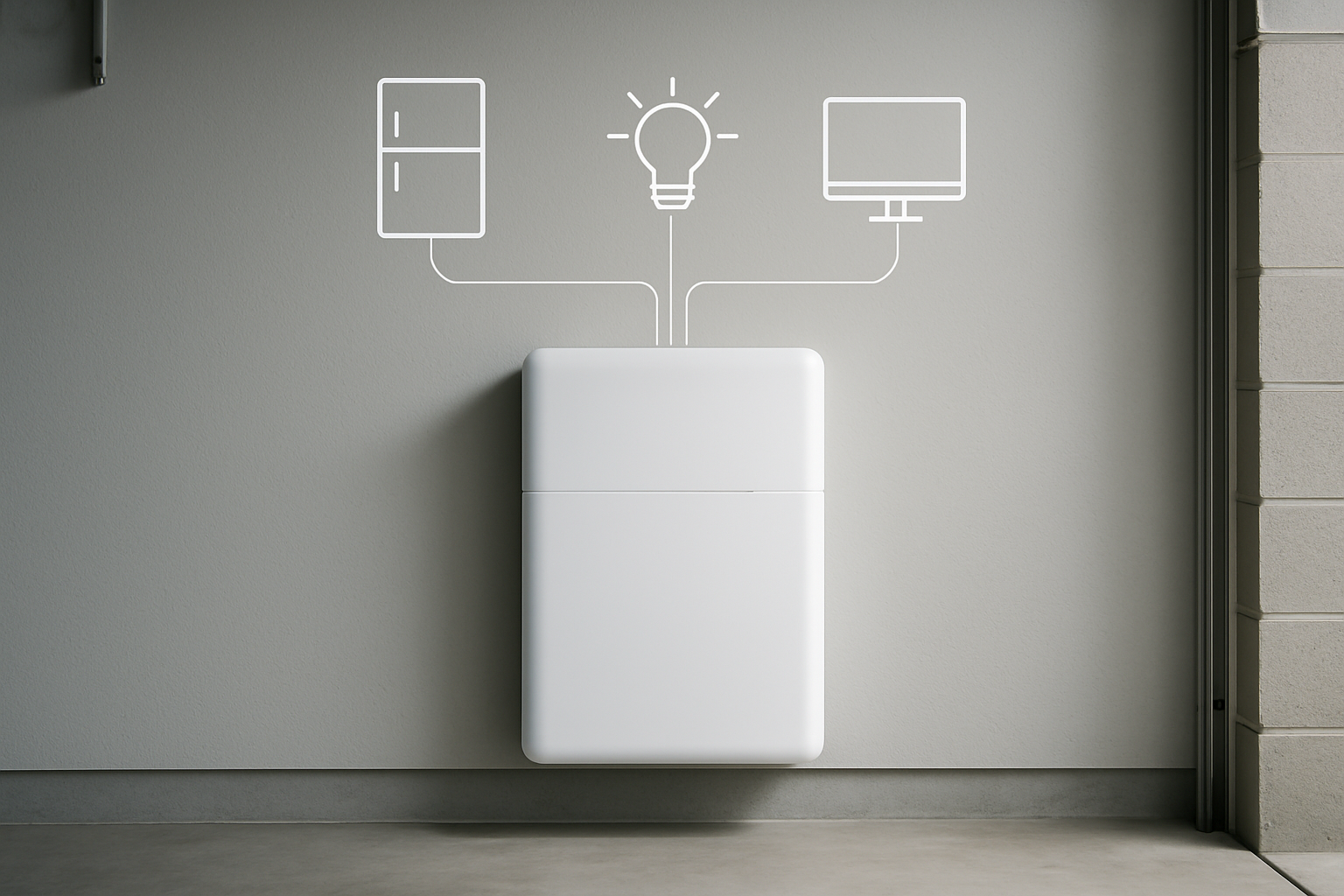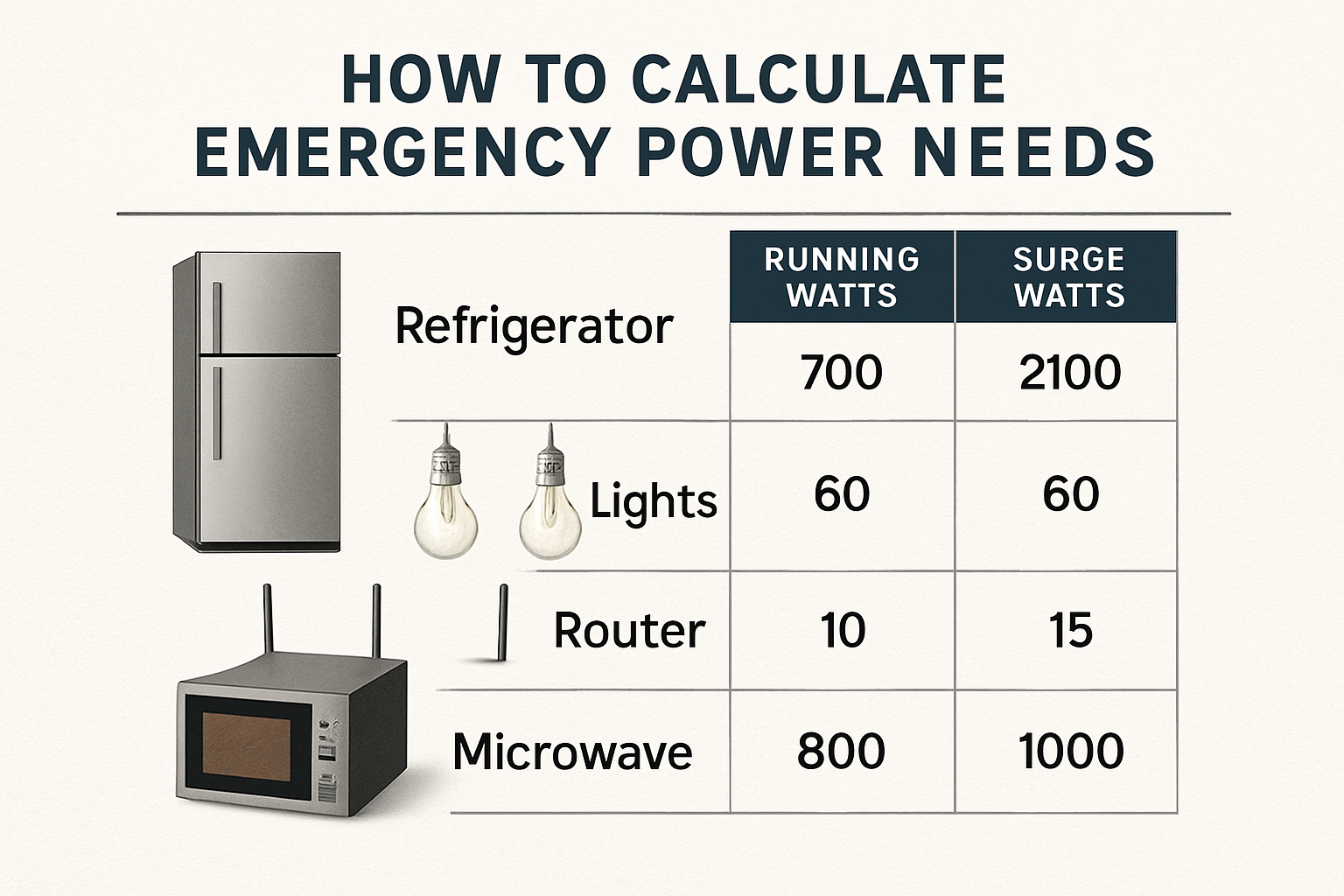Imagine this: a power outage hits your neighborhood, but you're prepared. Your home energy storage system kicks in seamlessly. But for how long? The difference between a few hours of convenience and several days of security comes down to one critical factor: a precise understanding of your energy needs. Accurately estimating battery backup time based on your household load is the foundation of a reliable energy storage system and the key to achieving genuine energy independence.
Many system owners experience frustration when their backup power runs out sooner than expected. This often happens not because the equipment is faulty, but because the initial load planning was inaccurate. This guide provides a clear path to mastering backup duration estimation, moving you from guesswork to confidence.
The Foundation: Understanding Your Energy Consumption (Load)
Before you can determine how long your battery will last, you first need to know exactly what it will be powering. This is your electrical load. Getting this right is the most important step in the entire process.
What is an Electrical Load?
An electrical load is any device that consumes electricity. Loads are measured in watts (W), which represents the rate of energy consumption at any given moment. To estimate battery duration, we also need to consider watt-hours (Wh), which is the total amount of energy consumed over a period. For example, a 100W light bulb left on for three hours consumes 300Wh of energy (100 Watts x 3 Hours).
It's also important to distinguish between two types of loads:
- Continuous Load: The steady power a device draws while running, like a refrigerator's compressor or a television.
- Surge Load: The brief, high-power spike a device requires to start up. Motors in appliances like well pumps, air conditioners, and refrigerators have significant surge loads that your inverter and battery must be able to handle.
How to Conduct a Load Audit
A load audit is a systematic process of identifying every appliance you intend to power during an outage and calculating its energy consumption. This hands-on approach is the only way to get a truly accurate picture of your needs.
- List Your Critical Appliances: Decide which devices are essential during an outage. This is a crucial step in load planning. For guidance, consider reading about 5 Critical Loads to Plan for Your Energy Storage System.
- Find the Wattage: Check the label on each appliance for its power rating in watts. If it only lists amps and volts, you can calculate watts by multiplying the two (Watts = Volts x Amps).
- Estimate Daily Usage: For each appliance, estimate how many hours you will use it per day during an outage. Be realistic.
- Calculate Watt-Hours (Wh): Multiply the appliance's wattage by its daily usage hours to get the daily energy consumption in Wh.
- Sum It All Up: Add the daily Wh of all critical appliances to find your total daily energy requirement.
Here is a simple table to help you organize your audit:
| Appliance | Power (Watts) | Estimated Daily Use (Hours) | Daily Energy (Watt-hours) |
|---|---|---|---|
| Refrigerator | 150 W | 8 (cycling) | 1200 Wh |
| LED Lights (5) | 50 W | 6 | 300 Wh |
| Internet Router | 10 W | 24 | 240 Wh |
| Total | - | - | 1740 Wh |
Common Pitfalls in Load Estimation
A common mistake is underestimating consumption. Many modern electronics have "phantom loads," drawing power even when turned off. These small drains can add up significantly. It's also easy to misjudge how much energy certain appliances use. To avoid these traps, it's helpful to understand common Appliance Load Myths: Stop Draining Your Solar Battery.
The Core Calculation: From Load to Backup Time
Once you have an accurate total for your daily energy consumption (your load in Wh), you can calculate your estimated backup duration. This involves understanding your battery's true capacity and accounting for system inefficiencies.
The Essential Formula for Backup Duration
The basic formula to estimate backup time is:
Backup Time (in hours) = (Battery Capacity (Wh) × Depth of Discharge (DoD) × System Efficiency) / Average Load (W)
Let's break down each component of this critical equation.
Battery Capacity and Depth of Discharge (DoD)
A battery's capacity is rated in watt-hours (Wh) or kilowatt-hours (kWh). However, not all of this capacity is usable. The Depth of Discharge (DoD) is the percentage of the battery's total capacity that can be safely drained without damaging it.
This is where battery chemistry makes a huge difference. Traditional lead-acid batteries have a recommended DoD of around 50%. Draining them further can significantly shorten their lifespan. In contrast, modern Lithium Iron Phosphate (LiFePO4) batteries, which are at the core of our energy storage solutions, offer a much higher DoD, often 90% or more. This means you get to use more of the energy you paid for. For a deeper dive into this comparison, see LiFePO4 vs. Lead-Acid: Sizing for Peak Backup Duration.
Understanding the relationship between DoD and cycle life is key to long-term performance. A battery's cycle life is the number of charge/discharge cycles it can handle before its capacity degrades significantly. LiFePO4 batteries not only have a higher DoD but also a much longer cycle life, ensuring reliable performance for years. To learn more about their longevity, explore How Long Does a LiFePO4 Home Battery Really Last?.
Factoring in System Inefficiencies
Energy is lost as it moves through your system. The two main sources of inefficiency are the battery itself and the inverter.
- Round-Trip Efficiency: This measures how much energy you get out of a battery compared to what you put in. According to analysis by the International Energy Agency (IEA), lithium-ion batteries typically have a round-trip efficiency of around 81-90%.
- Inverter Efficiency: The solar inverter, which converts the battery's DC power to AC power for your home, also consumes some energy. Most modern inverters are 90-95% efficient.
To be safe, it's wise to assume a total system efficiency of around 85%. An improperly sized inverter can create additional losses, making it important to understand how to approach Sizing Your Solar Inverter for Optimal Battery Runtime.
Advanced Considerations for Accurate Sizing
While the basic formula provides a good starting point, professional system design involves more detailed analysis to ensure reliability under all conditions.
Sizing for Reality: Peak Loads and Surge Demands
Your average load is useful for estimating duration, but your system must also be powerful enough to handle peak demand—when multiple appliances run simultaneously—and the initial surge from motor-driven devices. Your battery's C-rate, which defines how quickly it can be discharged, is a critical factor here. As detailed in the Ultimate Reference for Solar & Storage Performance, a higher C-rate allows the battery to meet high power demands without stress. LiFePO4 batteries generally have superior C-ratings compared to lead-acid technologies.
The Role of System-Level Modeling
For large-scale or mission-critical applications, a more sophisticated approach is needed. The International Renewable Energy Agency (IRENA) highlights the use of advanced software for capacity expansion and production cost simulations. This type of modeling helps capture the complex interaction between renewable generation, storage, and load, ensuring the system is economically viable and technically sound. It allows planners to assess the full value of storage, including its ability to reduce the need for other generation infrastructure investments.
The Impact of Charging and Discharging Cycles
How a battery is used directly impacts its lifespan. The ability to shift energy from times of high generation to periods of high demand is a key benefit of battery storage. However, accurately modeling this requires a detailed understanding of the energy system. According to the IEA, different storage technologies are suited for different applications, from short-term grid services to long-duration backup. This is why a one-size-fits-all approach to battery sizing is often inadequate; the system must be designed for its intended purpose.
Practical Strategies to Extend Your Backup Duration
Calculating your needs is the first step. The next is implementing strategies to make your stored energy last as long as possible when you need it most.
Effective Load Management
The simplest way to extend your backup duration is to use less power. This doesn't mean sitting in the dark. It means being strategic about your energy use during an outage. Simple actions like turning off lights in unused rooms, avoiding high-power appliances like electric dryers, and staggering the use of devices like microwaves and coffee makers can make a huge difference. For a structured approach, review this Maximize Your Backup: A Blueprint for Load Management.
Choosing the Right Components
A reliable backup system is more than just a battery. It's an integrated solution. High-performance LiFePO4 batteries, efficient hybrid inverters, and properly sized solar panels work together to maximize energy capture, storage, and delivery. Our integrated home energy storage systems are designed to minimize efficiency losses and provide a seamless, reliable source of power. Getting the battery size right from the start is paramount, which is why it's essential to understand How to Size Your Solar Battery for True Energy Independence.
Using Sizing Tools and Calculators
While manual calculations are invaluable for understanding the fundamentals, online tools can simplify the process. A comprehensive sizing calculator can help you input your specific loads and receive a tailored recommendation for your battery and system size. For a complete walkthrough, check out The Ultimate Home Energy Storage Sizing Calculator & Guide.
Moving Beyond Estimates to Energy Certainty
Estimating your backup duration is a journey from uncertainty to empowerment. It begins with a thorough audit of your energy consumption and an understanding of the technical specifications of your equipment. By carefully planning your loads, selecting high-quality components like LiFePO4 batteries, and accounting for real-world inefficiencies, you can design an energy storage system that meets your expectations.
Ultimately, this process is about more than just numbers; it's about building a resilient and reliable power solution that provides security and peace of mind, paving the way for true energy independence.
Disclaimer: The information provided in this article is for educational purposes only. It is not intended as financial or legal advice. Please consult with a qualified professional before making any decisions related to installing an energy storage system.





Leave a comment
All comments are moderated before being published.
This site is protected by hCaptcha and the hCaptcha Privacy Policy and Terms of Service apply.